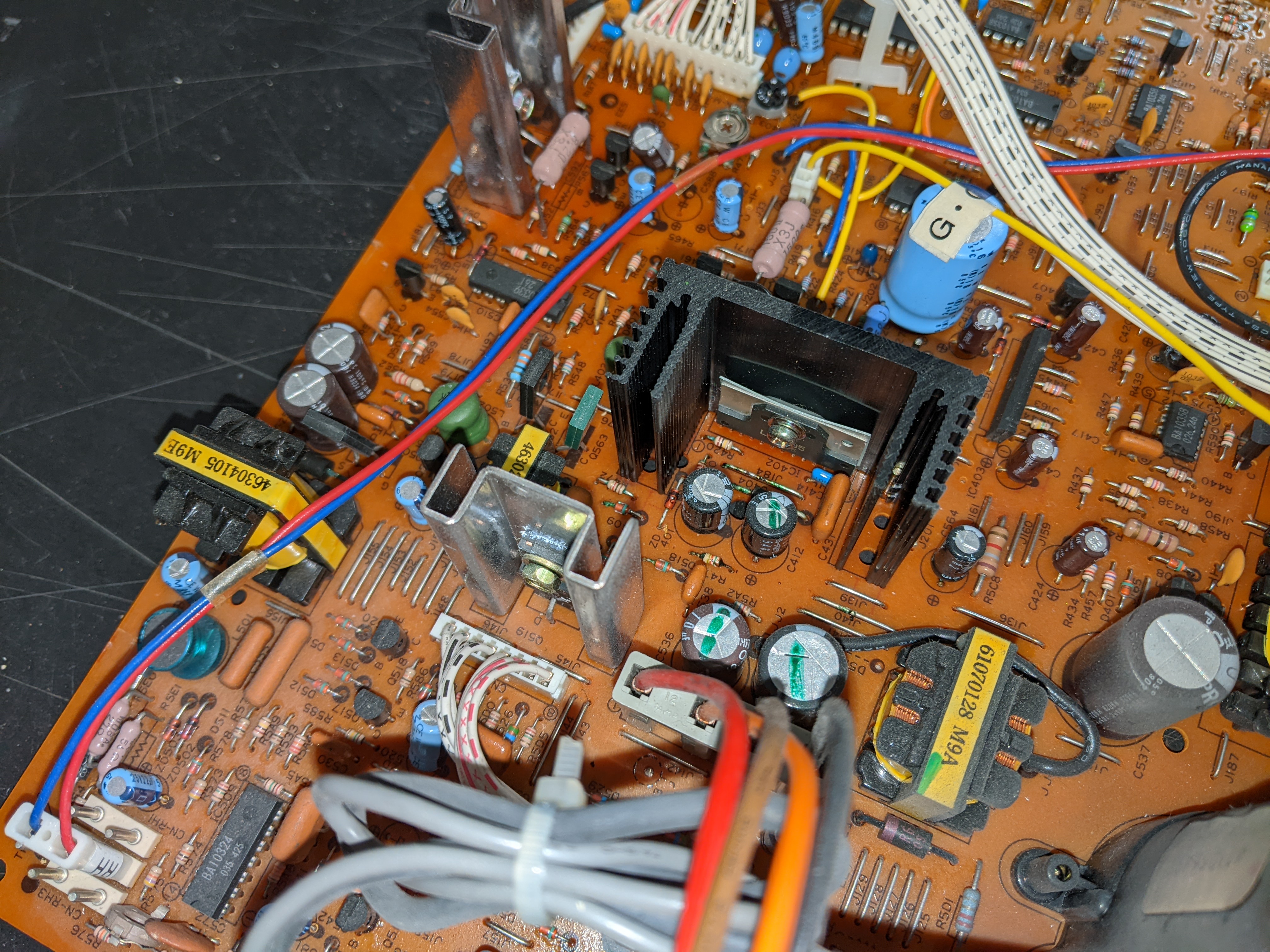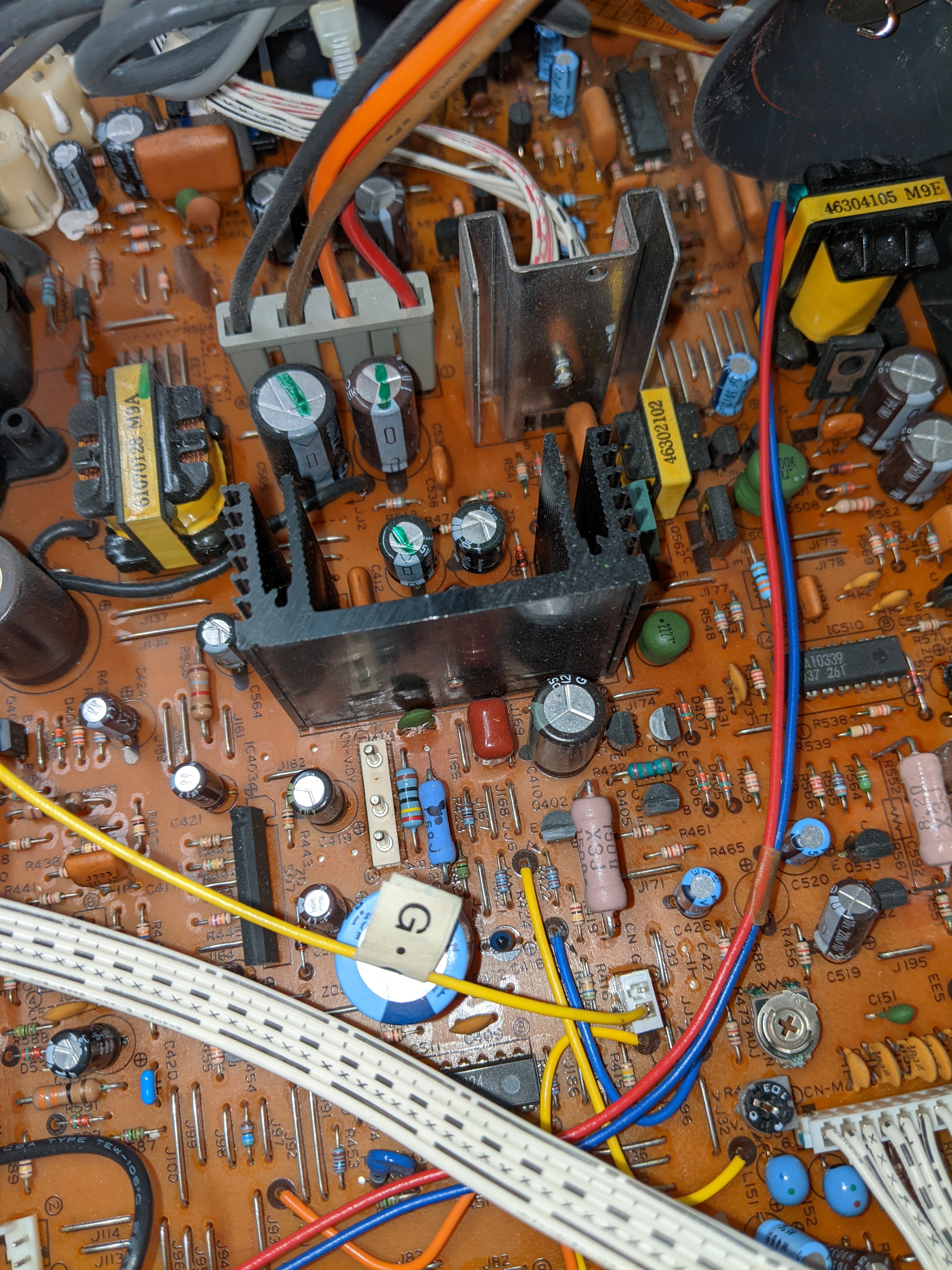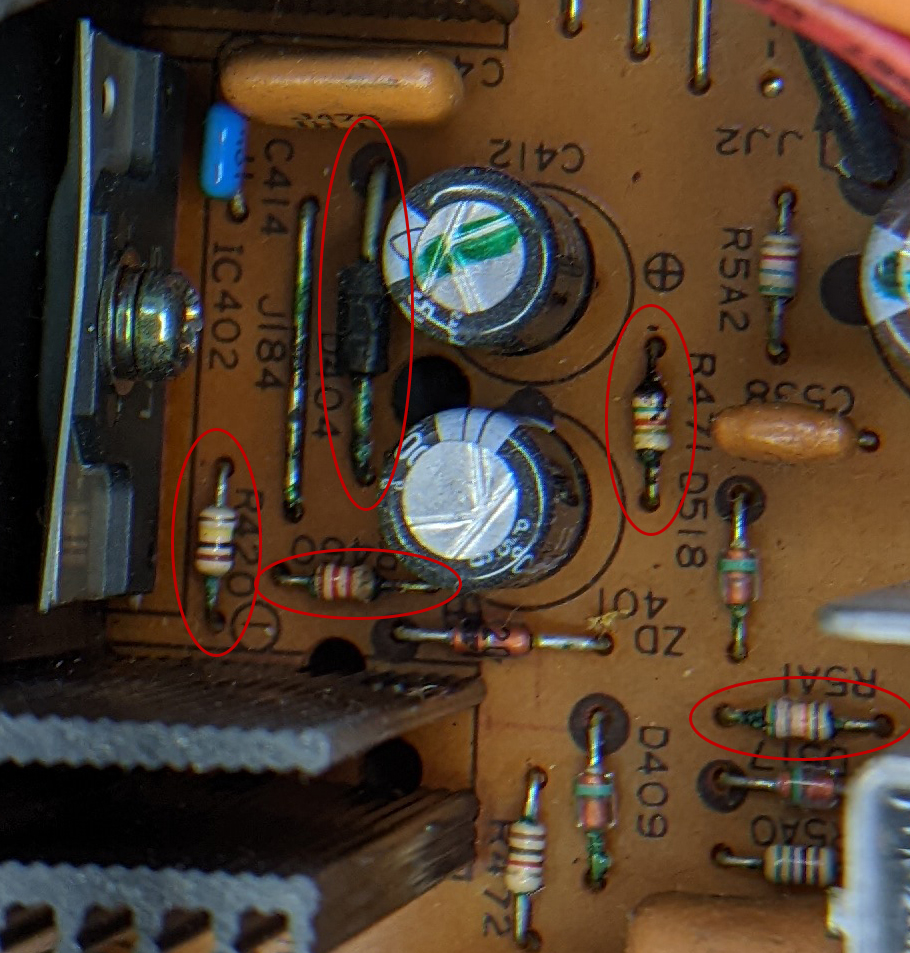First post, by ArcadEd
Hi Everyone,
So I have repaired my fair share of TVs and Arcade Monitors. Upon opening up this Monitor I realized there is a bit more here than your typical CRT.
What is going on right now is the there is a single, really bright, line though the center, horizontal. Based on what I have read it's possible the vertical has collapsed. Some repairs have been replacing the vertical IC, others replacing caps. None of these were on this crt though.
Does anyone have experience repairing this particular monitor? What would a good starting point be?
I have tried it on another computer, same issue.
Line does not appear unless it has an active signal (it's not there when just turning the monitor on).
I removed the back and just did a quick scan for bulging Caps and fried ICs. Nothing really looked bad, but there is a lot to look at. I'll discharge it and take a closer look once I have a starting point.
I have the service manual in PDF.
Thanks




